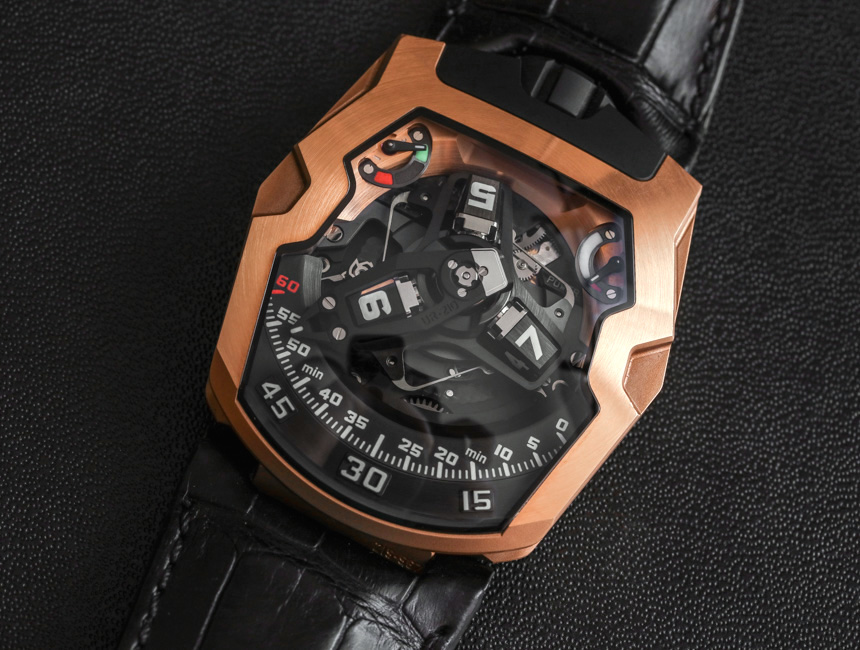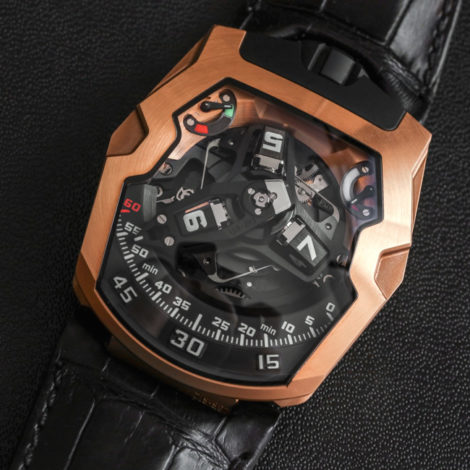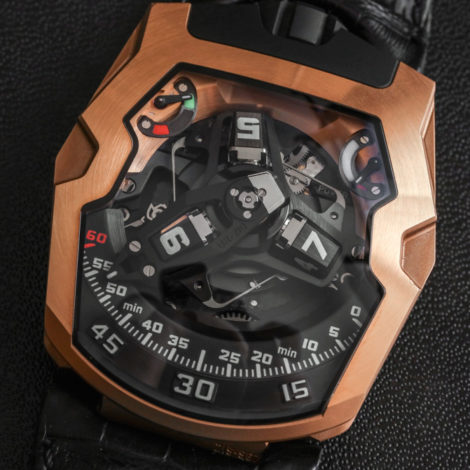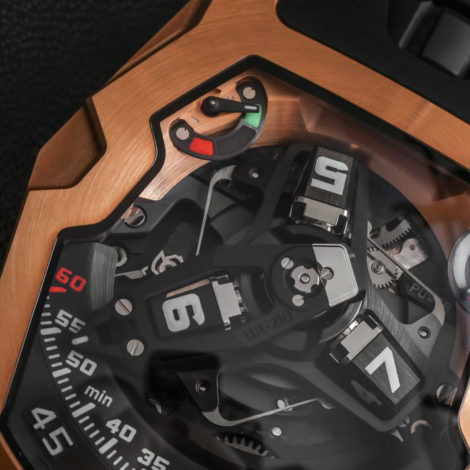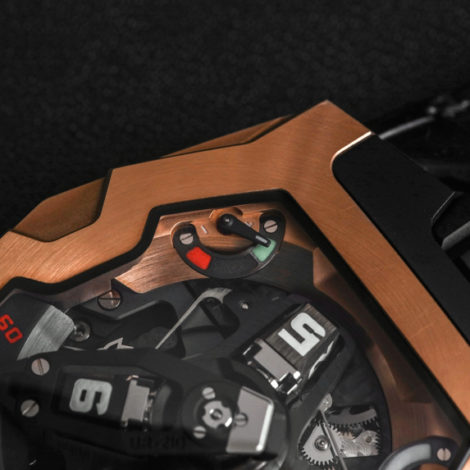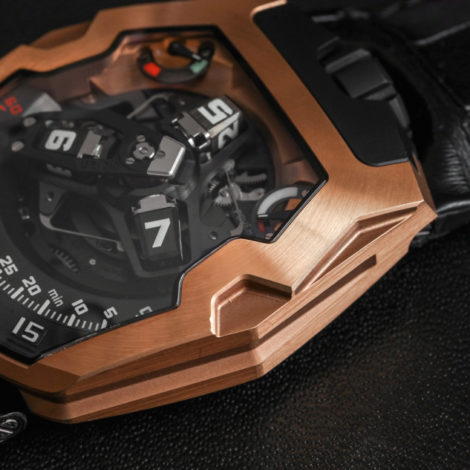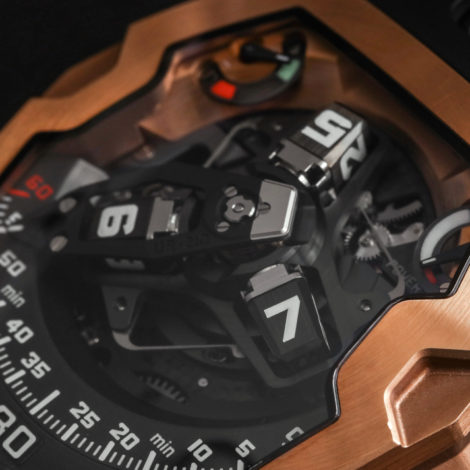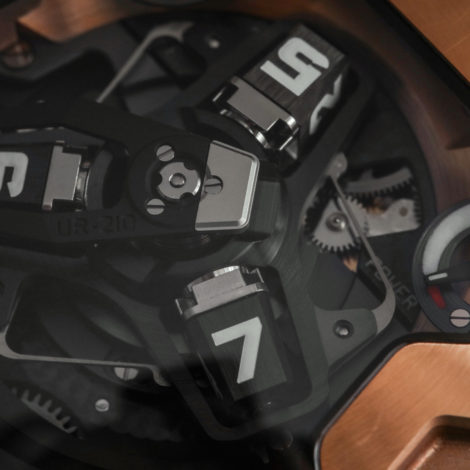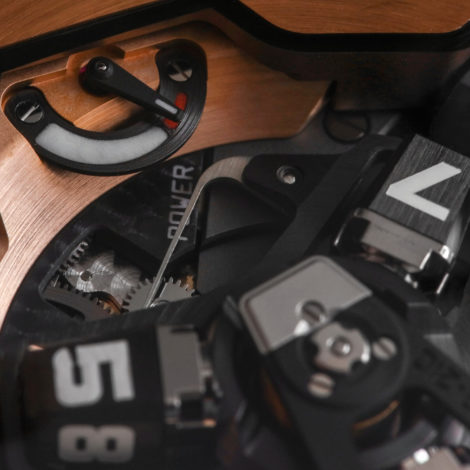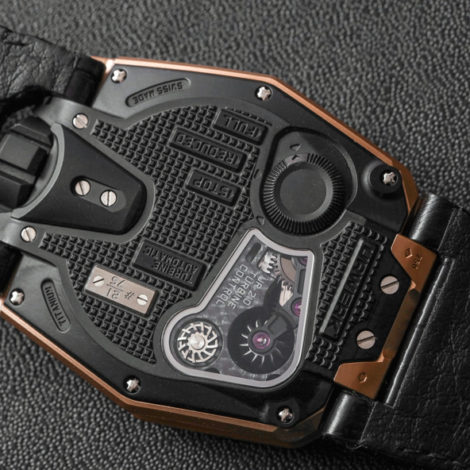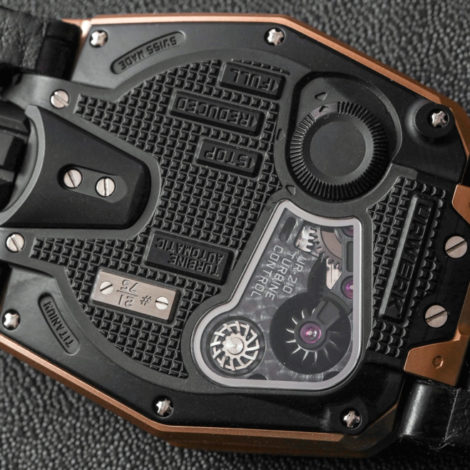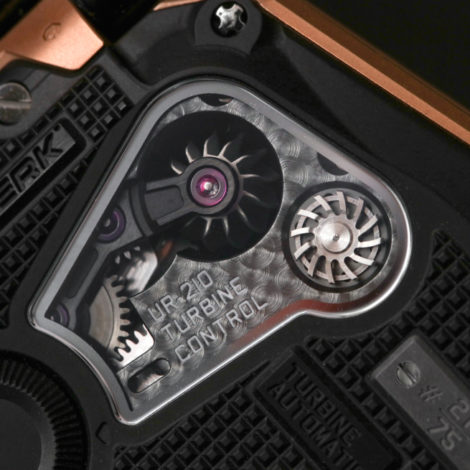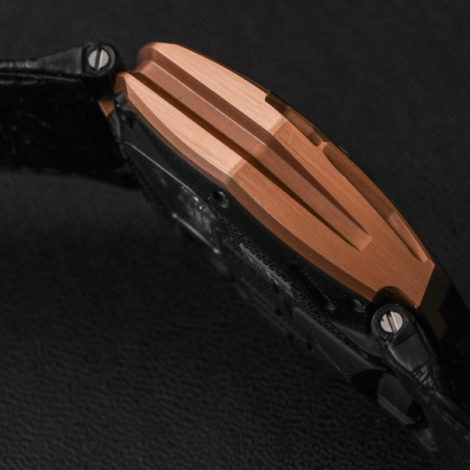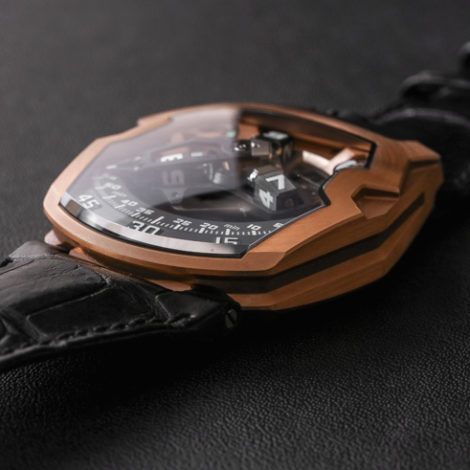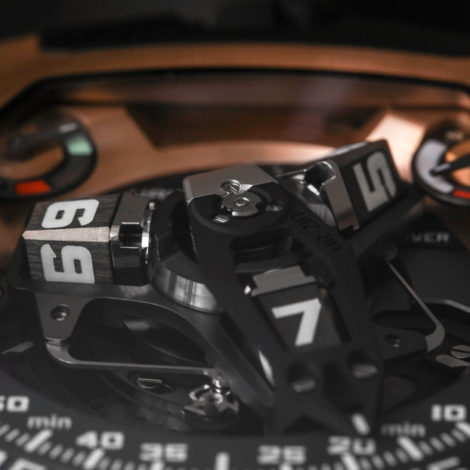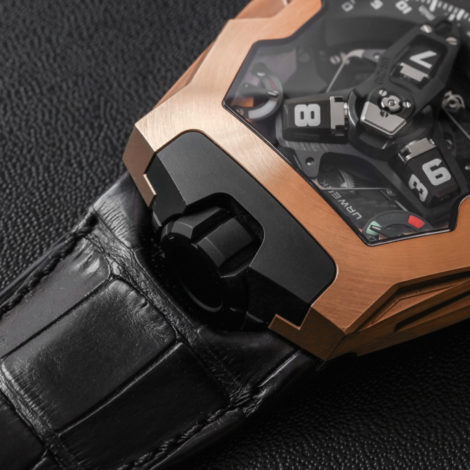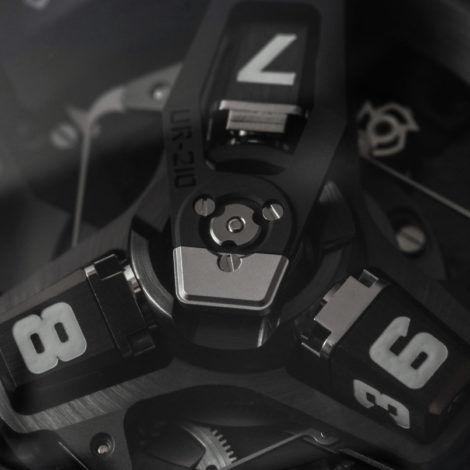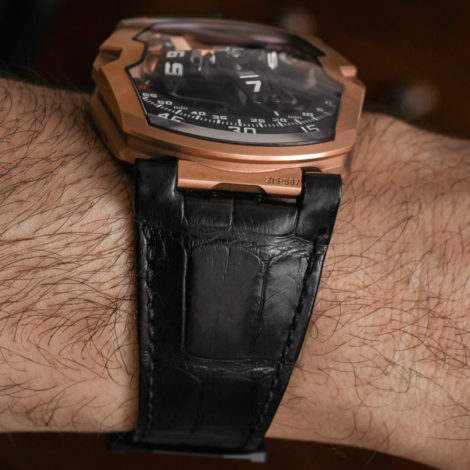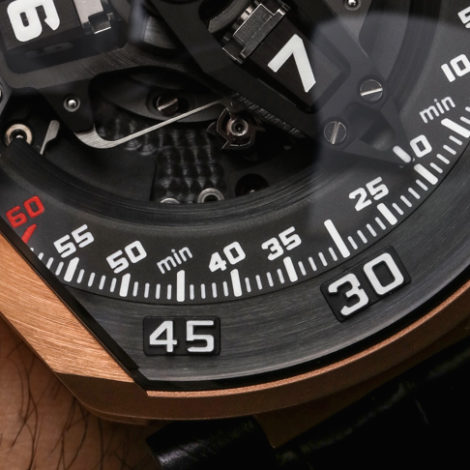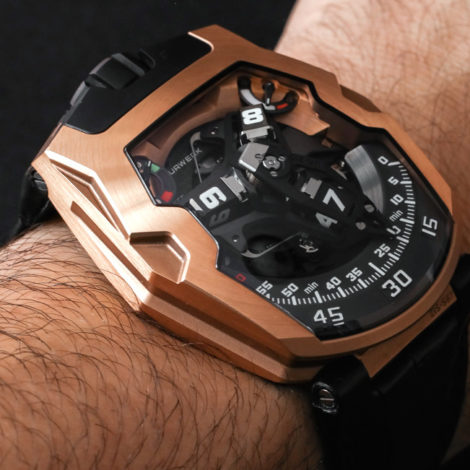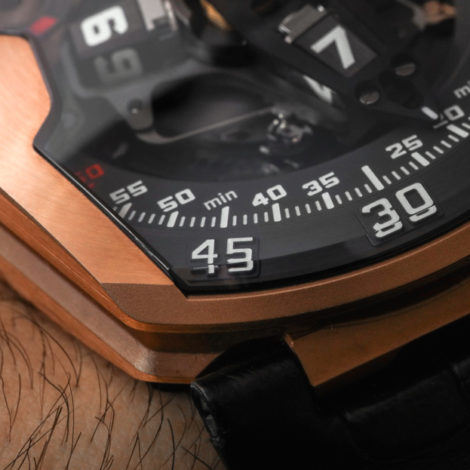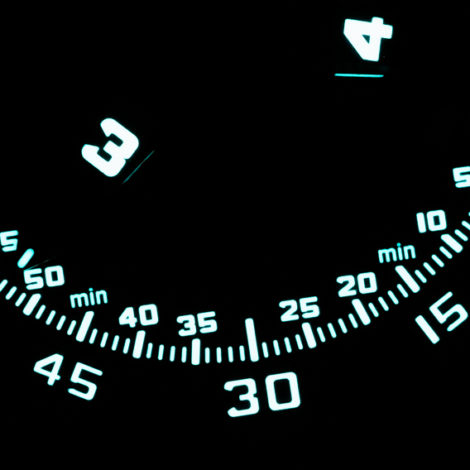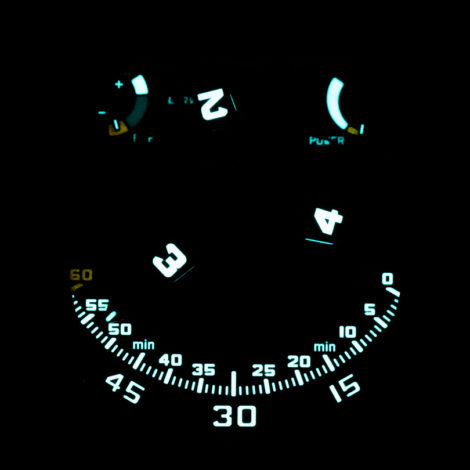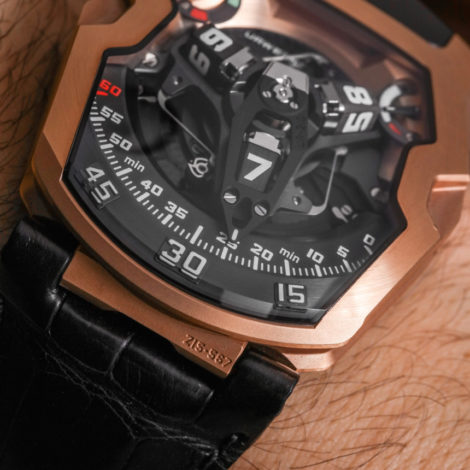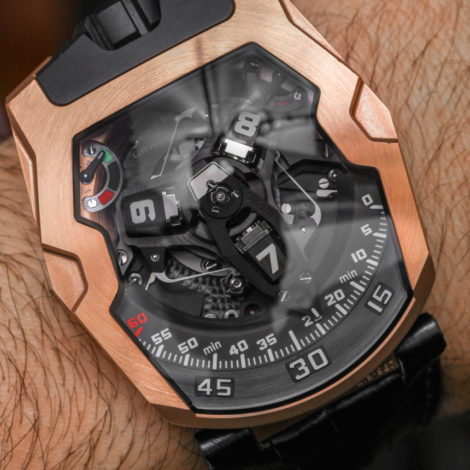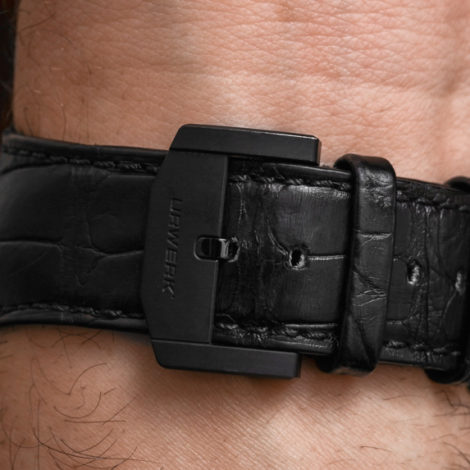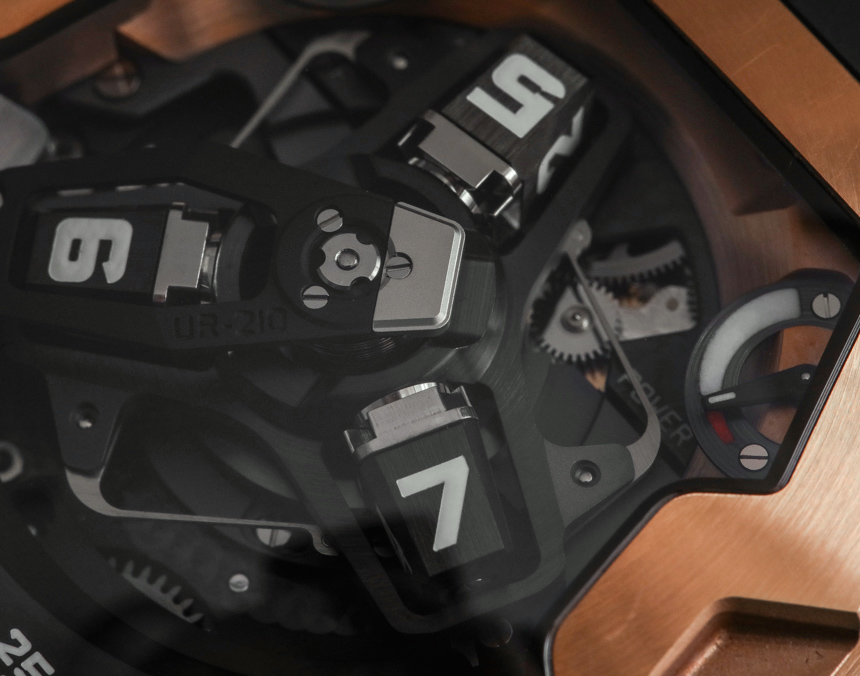
Suffice it to say that during my otherwise very happy time reviewing this watch, I was never once compelled to change the winding efficiency on the movement. Then again, I did enjoy the opportunity to explain what the winding efficiency selector was, and I could tell people were impressed. If you measure the value of a luxury timepiece by its ability to impress others, then you certainly DO want a watch with a winding efficiency selector (because you never know what type of 007 situation you might be in that requires it).
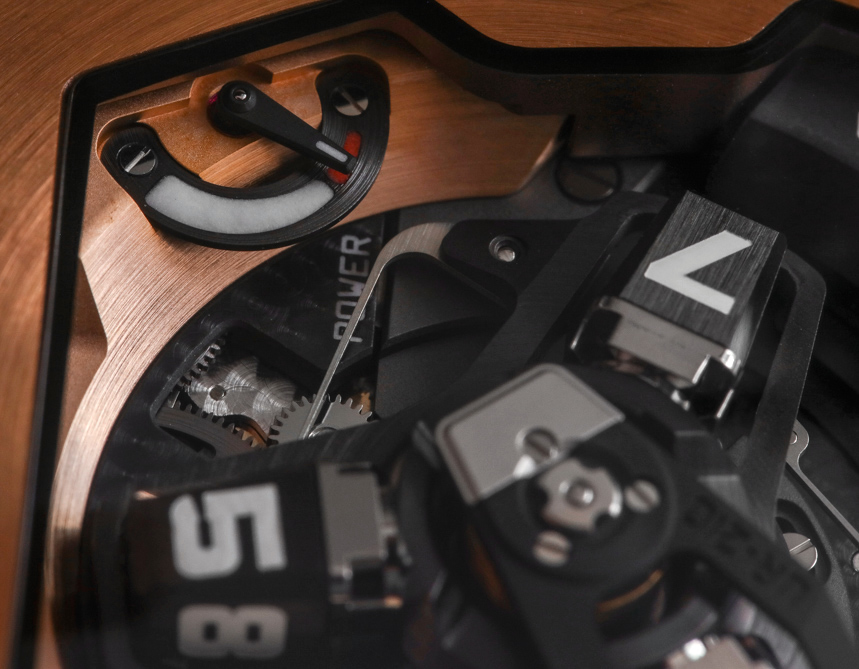
Equally obscure in usage but a bit more relatable for us mere mortals is another interesting complication in the UR-210 visible on the dial-side of the watch that Urwerk calls the winding efficiency indicator. Funny enough, both the winding efficiency indicator and the winding efficiency selector might be at odds with one another since one can reduce or stop winding efficiency, and the other is there to indicate if you aren’t winding the watch efficiently enough.

In theory, there is an “optimum” amount of winding any mechanical movement should have in order to not be “over-wound,” and in order to maintain optimal accuracy thanks to the mainspring being wound enough. Urwerk has toyed with the idea of having a watch that helps you keep it accurate. The most advanced execution of this concept is contained in the Urwerk EMC collection which initially debuted one year after the UR-210. The EMC includes an electronic rate result tool that can be activated to determine the current accuracy of the mechanical movement inside of it. The user can then turn a small screw on the rear of the case in order to tweak the fine adjustment of the regulation system – in theory allowing you to make the watch more accurate.
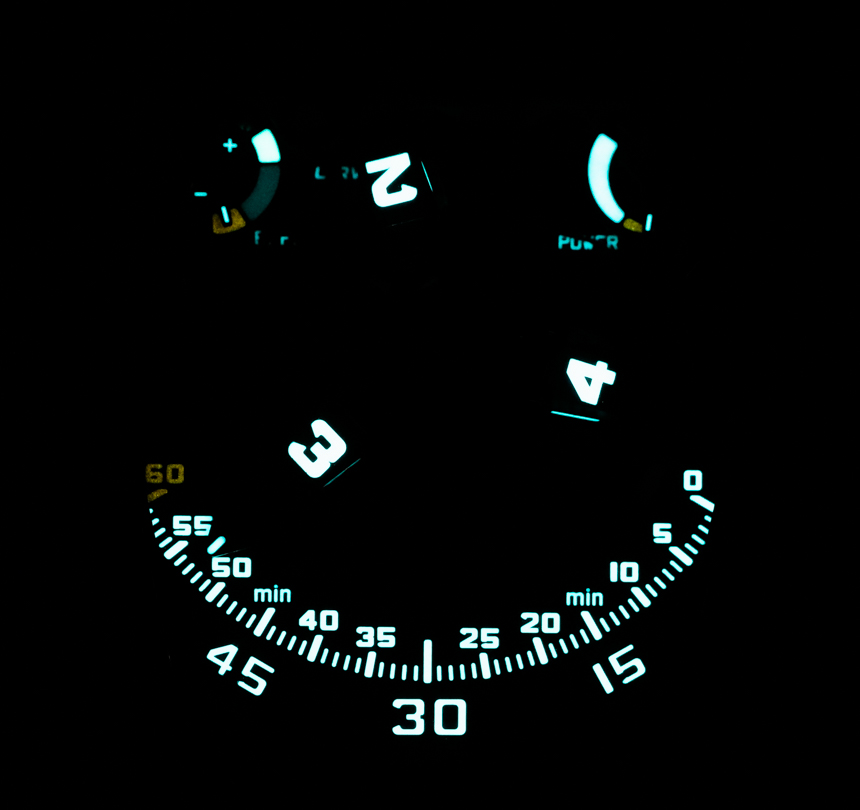
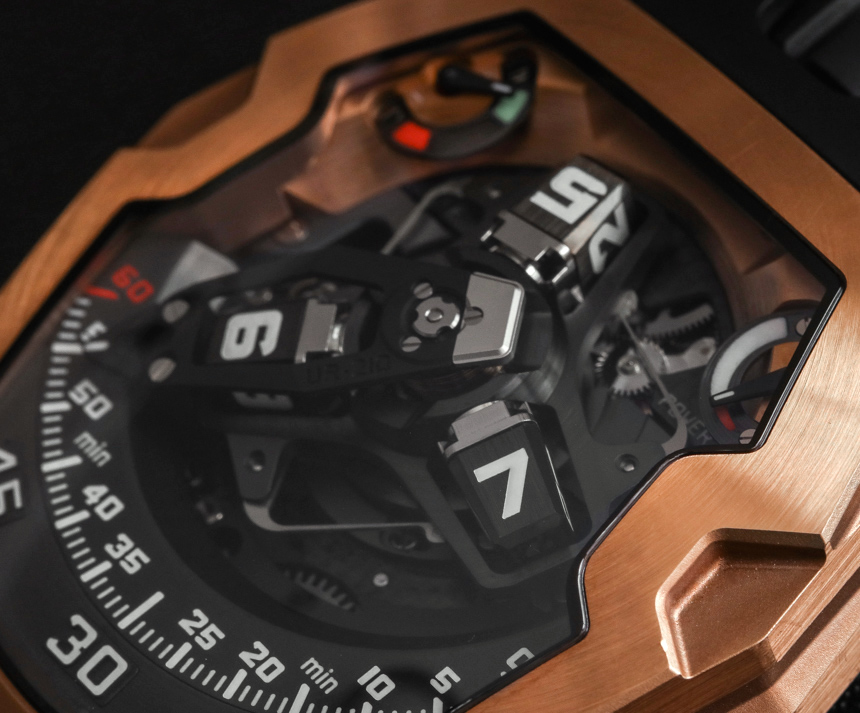
Going back to the UR-210, the winding efficiency indicator scale sits on the upper left side of the dial adjacent to the power reserve indicator which is on the upper right side of the dial. The idea is that if the indicator hand is in the red zone, the movement isn’t being wound enough and the movement will eventually run out of power if the slow winding (or lack thereof continues). If the indicator is out of red area, then my understanding is that the automatic winding is enough to keep the movement going. Intellectually this is a very interesting concept, but probably best for those who are very in tune with their devices and have the time (and desire) to pay attention to this stuff. My understanding is that as a person’s income goes up, their available free time tends to go down. Given that this is clearly a “high luxury” item, I am not sure that I’ve met too many people who have the income to get a watch like this, as well as the mental bandwidth to pay attention to the current winding efficiency. For the rest of my thoughts on this, see above where I discuss how storytelling and the ability to impress people add to the value of a watch.
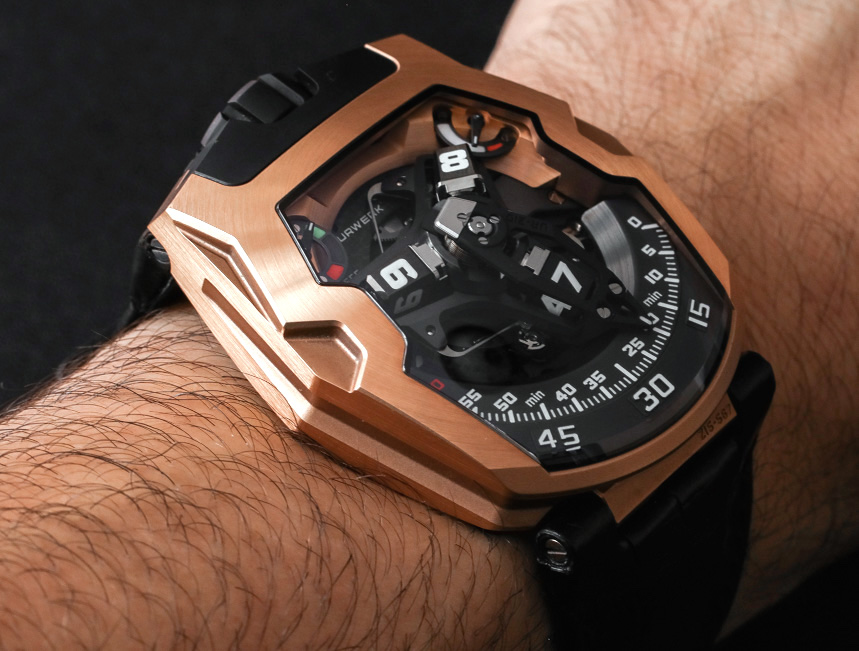
My main focus with any timepiece isn’t the “side complications,” but rather how it tells the time. One of my biggest compliments to Urwerk’s regular use of a “satellite time indication system” is how nicely legible and practical it is. I can’t speak for everyone, but I can say that I found reading the time using the “roaming” hour/minute hand along the minute scale easy and comfortable. Mentally, your eyes first see the hour (digitally) and then read the minute at the same spot. This meant that the time required for me to read the time was in many instances shorter than with a standard two or three hand analog watch dial.

Not all Urwerk satellite time indications are exactly the same. The particular flavor in the UR-210’s UR-7.10 movement is among the coolest in my opinion. The black-colored (for this model) hour hand is actually a retrograde hand, while the inner three-armed system spins around clockwise. Each of the three arms has a cube with four hour markers on it. As the system turns, these cubes turn over to reveal the next numeral in the series. It’s cool to watch and play with. Better yet is the ability to set the time forward as well as the ability to reverse the hours and set the time that way. I believe that in some early Urwerk watches you could only set the time forward.
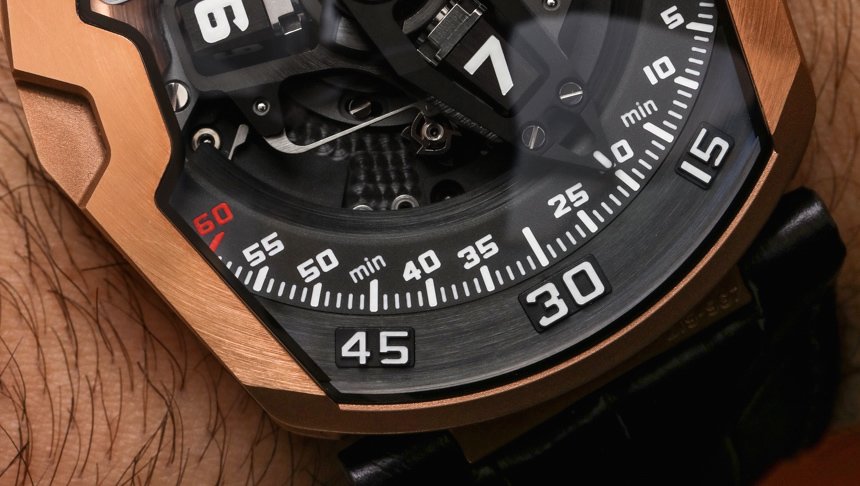
Simply being able to observe the entire satellite time indication system with the accompanying componentry on the dial of the UR-210 is a joy. The precise nature of the parts, along with their elegant yet modern design is part of what makes Urwerk such a great luxury item. These are truly mechanical wonders for people who like living in the now. While there are, of course, plenty of synergies between traditional watchmaking and what Geneva-based Urwerk makes, a key element of the brand’s charm is their almost isolationist viewpoint on following trends or taking what others are doing into consideration. Felix and Martin who run the brand deserve some applause for making not only amazing timepieces, but also entirely different watches compared to what exists at this or any other price category.
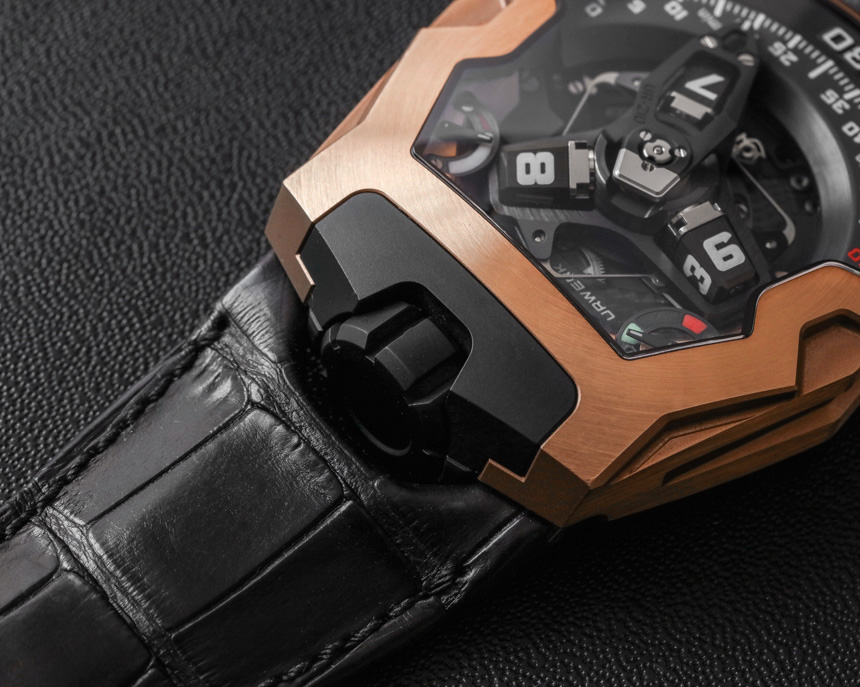
The UR-7.10 automatic movement operates at 4Hz with 39 hours of power reserve. This slightly less than ideal power reserve is simply a reflection of the weight of the parts, as well as the accompanying friction in the movement that requires a lot more power than most traditional mechanical movements to operate properly. Most of the visible elements of the movement are produced in aluminum and titanium. Also welcome on the dial is the Super-LumiNova painted hour and minute markers, which offer excellent visibility in the dark assuming they are properly charged with light.
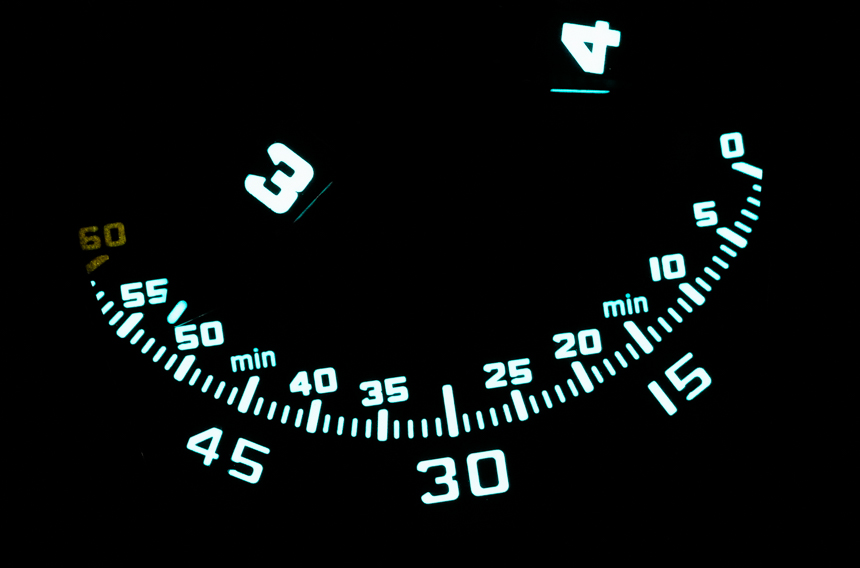

The real shame of an Urwerk is that more people can’t own watches like this given the prices. Whether or not you agree with the specific retail price, I think you can agree that something like this is complicated, highly-engineered, difficult to produce, and in no way could be democratically priced. Small, independent watchmakers like Urwerk rely on sympathetic benefactors who have the disposable income and product appreciation necessary to keep mechanical art like this alive. So rather than get irritated that I can’t go out and buy a UR-210 on a whim, I would rather remain happy that enough people can. Watches like this from brands like Urwerk keep the “superwatch” dream alive, and for many people are like that Lamborghini, Bugatti, Ferrari, etc.. that they can admire from afar. Price for the Urwerk UR-210 RG watch is $150,000 USD. urwerk.com
Necessary Data
>Brand: Urwerk
>Model: UR-210 RG
>Price: $150,000 USD
>Size: 43.8mm wide, 17.8mm thick, and 53.6mm long.
>Would reviewer personally wear it: Yes.
>Friend we’d recommend it to first: Well-funded aficionado of extreme mechanics and modern design with some available real estate on their wrist.
>Best characteristic of watch: Joy-creating wearing experience with a cool design, very useful way of reading the time, and the storytelling watch collectors enjoy that makes sharing their timepieces with others pleasurable. Easily one of the most well-rounded timepieces that Urwerk makes.
>Worst characteristic of watch: It requires an horological intellectual to fully understand (let alone know how to use) the winding efficiency selector and winding efficiency indicator complications. For the money, case could have some added hand-finishing, especially on this red gold model to bring out the shine a bit more. Sapphire crystal could benefit from a bit more AR-coating on top.

